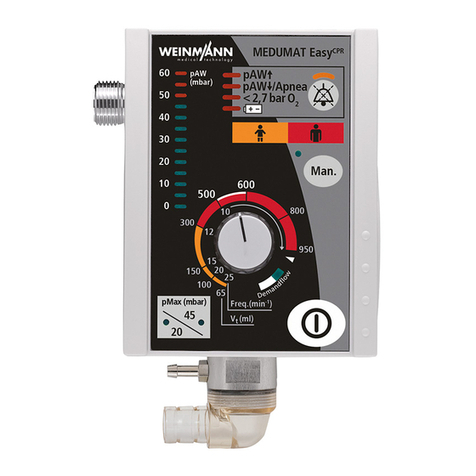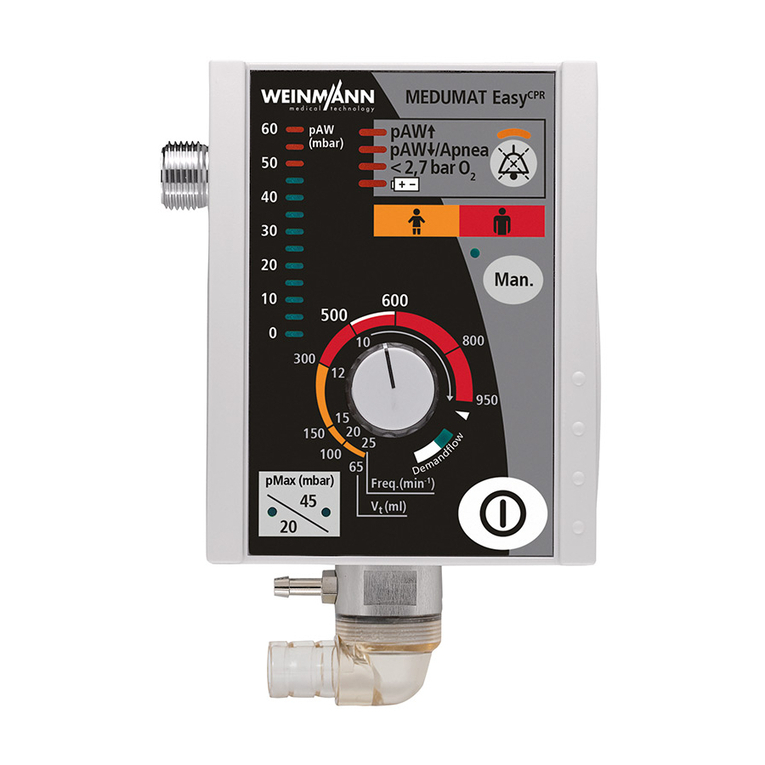
WM 68011g 08/2020
MEDUMAT Standard
2
E 3
Table of Contents
4.12 After use ..................................................................................... 97
4.13 Using the SD card ........................................................................ 98
4.14 Enabling options ....................................................................... 100
4.15 Updating the software ............................................................... 102
4.16 Pairing an external data documentation system with the device for
the first time (using the Bluetooth data transmission option) ...... 105
4.17 Using the simulation mode ........................................................ 106
5 ser menu 108
5.1 Navigating the user menu ......................................................... 108
5.2 Structure of the user menu ........................................................ 109
5.3 Settings in the user menu .......................................................... 110
6 Operator menu 121
6.1 Navigating the operator menu ................................................... 121
6.2 Structure of the operator menu .................................................. 123
6.3 Settings in the operator menu .................................................... 124
7 Description of the modes 141
7.1 Classification of the ventilation modes ....................................... 141
7.2 Ventilation parameters .............................................................. 143
7.3 Ventilation modes ..................................................................... 145
7.4 Additional functions .................................................................. 163
8 Hygienic reprocessing 172
8.1 General instructions .................................................................. 175
8.2 ntervals .................................................................................... 176
8.3 Preparing hygienic reprocessing ................................................. 176
8.4 Disassembly of the reusable hose system ................................... 177
8.5 Cleaning parts manually ............................................................ 182
8.6 Wipe disinfecting parts .............................................................. 185
8.7 mmersion disinfecting parts ...................................................... 186
8.8 Reprocessing parts mechanically ................................................ 188
8.9 Steam sterilizing parts (optional) ................................................ 189
8.10 Preparing parts for reuse ........................................................... 190
8.11 Assembling reusable hose system .............................................. 190
































